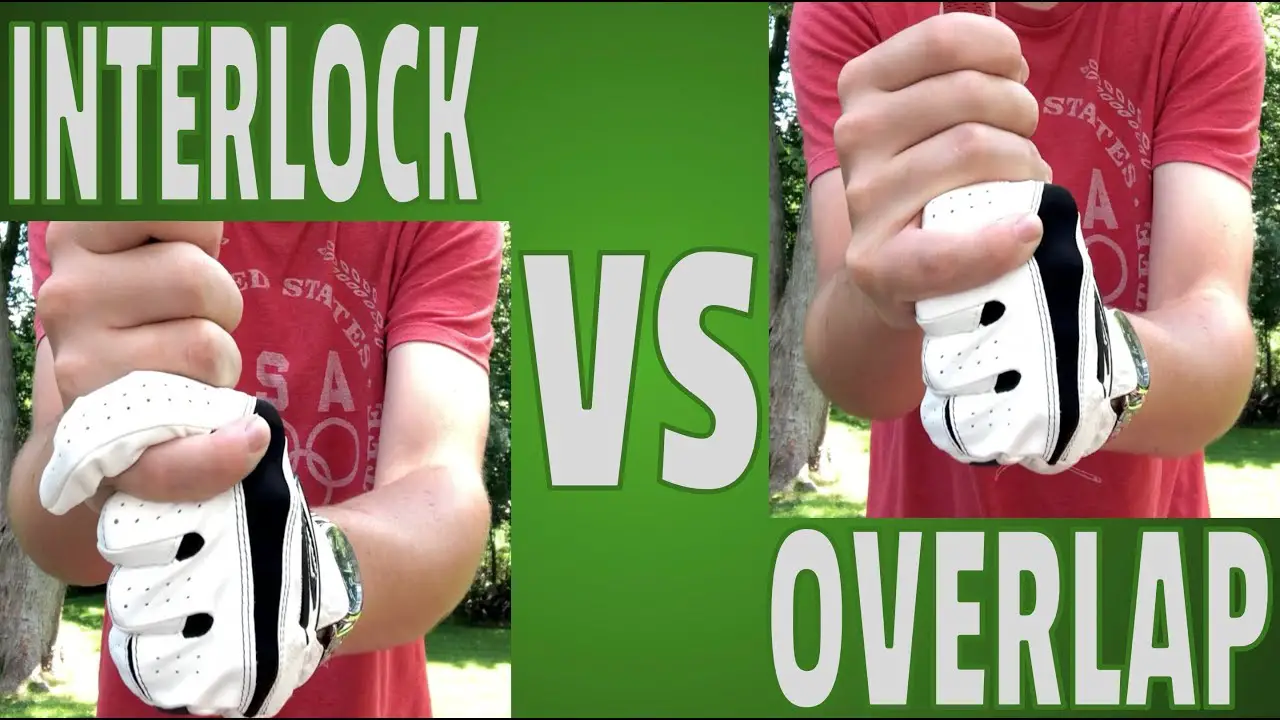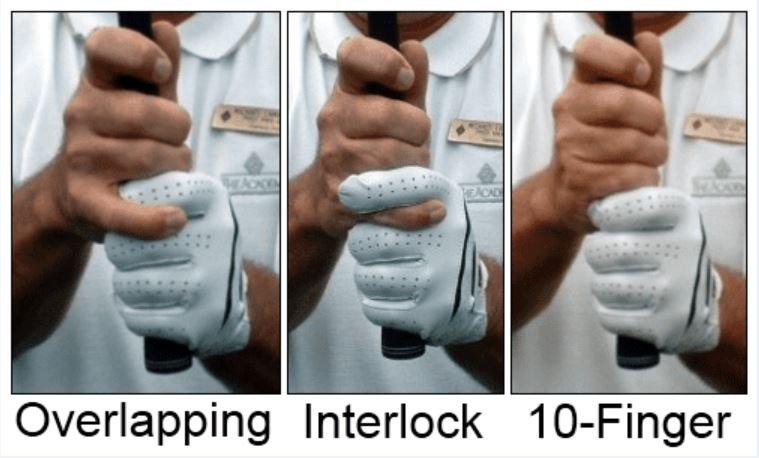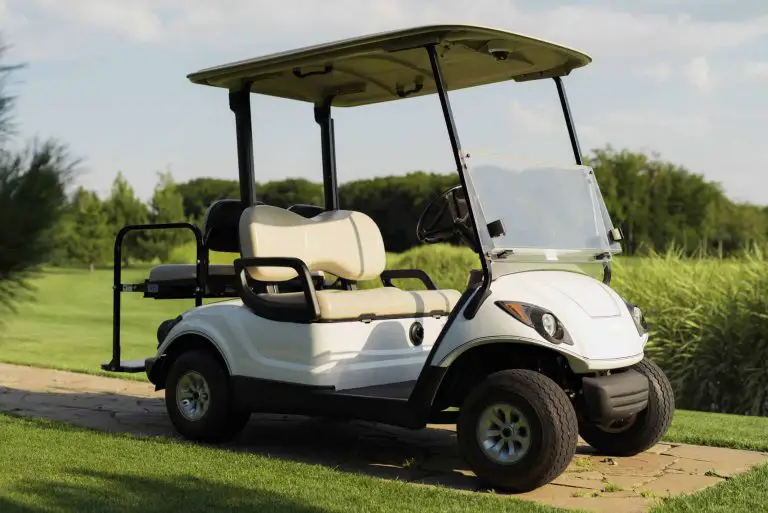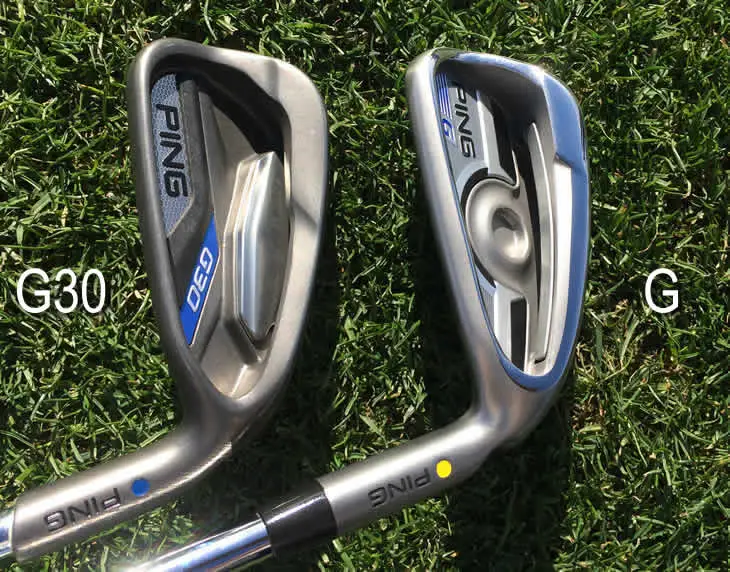Overlap Vs. Interlock Golf Grip

One of the most critical aspects of a golfer’s technique is the grip. How you hold the golf club can significantly impact your swing and overall performance. When it comes to grip styles, two popular options are the overlap grip and the interlock grip. These grips have been utilized by golfers of all skill levels and have sparked a longstanding debate about which one is better. In this comprehensive guide, we will delve into the differences, advantages, and considerations of the overlap and interlock golf grips. By understanding the techniques, benefits, and potential drawbacks of each grip style, you can make an informed decision about which grip is best suited for your game.
The overlap grip, also known as the Vardon grip, is favored by many professional golfers and offers a comfortable and natural feel. On the other hand, the interlock grip, used by prominent golfers like Jack Nicklaus, provides added stability and a more connected grip. While both grips have their merits, determining the right one for you depends on factors such as hand size, comfort, and personal preference.
So, whether you’re a beginner golfer seeking the optimal grip or an experienced player looking to reevaluate your technique, join us as we explore the overlap and interlock golf grips, comparing their techniques, analyzing their pros and cons, and ultimately helping you choose the grip that will enhance your performance on the course.

The Overlap Golf Grip
The overlap grip, also known as the Vardon grip, is one of the most widely used grip styles in golf. It involves placing the little finger of the trailing hand (right hand for right-handed golfers) over the index finger of the lead hand (left hand for right-handed golfers). This grip promotes a unified feel and can provide a sense of control and stability during the swing.
Technique and Hand Placement for the Overlap Grip
To execute the overlap grip:
- Place the club handle diagonally across the fingers of the lead hand (left hand for right-handed golfers).
- Wrap the little finger of the trailing hand (right hand for right-handed golfers) around the index finger of the lead hand.
- Allow the remaining fingers of the trailing hand to naturally wrap around the club handle.
- Ensure a firm yet comfortable grip pressure without excessive tension.
The overlap grip creates a connection between the hands and allows for a synchronized movement during the swing.
Pros and Cons of the Overlap Grip
The overlap grip offers several advantages that contribute to its popularity among golfers:
| Advantages |
|---|
| Provides a unified feel and connection between the hands |
| Enhances clubface control and shot consistency |
| Offers a comfortable grip for most hand sizes |
| Promotes a natural wrist hinge and release |
However, it’s essential to consider potential drawbacks or challenges associated with the overlap grip:
| Challenges |
|---|
| May be less suitable for golfers with larger hands |
| Can require practice to establish a consistent grip placement |
| Some golfers may experience difficulty generating power |
Despite these challenges, the overlap grip remains a preferred choice for many golfers due to its overall stability and control.
The Interlock Golf Grip
The interlock grip is another widely used grip style in golf, especially among players with smaller hands or those seeking a stronger connection between the hands. In this grip, the little finger of the trailing hand (right hand for right-handed golfers) interlocks with the index finger of the lead hand (left hand for right-handed golfers).
Technique and Hand Placement for the Interlock Grip
To execute the interlock grip:
- Place the club handle diagonally across the fingers of the lead hand (left hand for right-handed golfers).
- Interlock the little finger of the trailing hand (right hand for right-handed golfers) with the index finger of the lead hand.
- Wrap the remaining fingers of the trailing hand around the club handle.
- Maintain a comfortable grip pressure without excessive tension.
The interlock grip creates a firm connection between the hands and can provide added stability and control during the swing.
Pros and Cons of the Interlock Grip
The interlock grip offers several advantages that make it a popular choice for many golfers:
| Advantages |
|---|
| Provides a secure and connected feel between the hands |
| Enhances grip stability and control |
| Allows for a synchronized movement during the swing |
| Can be beneficial for golfers |
with smaller hands or those seeking a stronger grip connection |
However, it’s important to consider the potential drawbacks or challenges associated with the interlock grip:
| Challenges |
|---|
| May feel less natural for golfers with larger hands |
| Requires proper finger placement and grip pressure for comfort |
| Some golfers may experience difficulty with wrist flexibility and release |
Despite these challenges, the interlock grip remains a popular choice among golfers who value the added connection and stability it provides.
Comparing the Overlap and Interlock Grips
Now that we have explored the techniques and advantages of both the overlap and interlock grips, let’s compare them to help you determine which grip style is better suited for your game.
Which grip is better for different hand sizes and preferences?
Hand size and individual preferences play a significant role in choosing the right grip style. Golfers with larger hands may find the overlap grip more comfortable, as it provides more space between the fingers. On the other hand, golfers with smaller hands often prefer the interlock grip for its enhanced connection and stability.
Analyzing the differences in grip comfort and stability
Grip comfort and stability are crucial factors to consider. The overlap grip, with its larger surface area and finger separation, offers a comfortable grip for many golfers. It provides a sense of stability while maintaining control during the swing. On the other hand, the interlock grip provides a tighter connection between the hands, resulting in added stability and control for golfers with smaller hands or those seeking a firmer grip.
Examining the effects on clubface control and shot shaping
Both the overlap and interlock grips have the potential to influence clubface control and shot shaping. The overlap grip, with its slightly more separated hands, can allow for greater wrist action and release, offering more shot-shaping possibilities. The interlock grip, with its tighter connection, may promote a more unified and controlled clubface throughout the swing.
Considering the influence on grip pressure and hand/wrist actions
Grip pressure and hand/wrist actions are important aspects of the golf swing. The overlap grip, with its natural finger placement and slightly looser connection between the hands, can allow for more wrist hinge and freedom of movement. The interlock grip, with its tighter connection and locked fingers, may promote a more unified hand and wrist action, reducing the likelihood of excessive movement.
Ultimately, the choice between the overlap and interlock grips comes down to personal preference, hand size, and comfort. It’s important to experiment with both grips and assess which one provides the best feel, control, and consistency for your swing.
Choosing the Right Grip for You
When deciding on the grip that suits you best, consider the following factors:
- Hand size and finger length: Choose a grip style that accommodates your hand size and provides a comfortable fit.
- Comfort and feel: Select a grip that feels natural in your hands and allows for a confident, relaxed grip pressure.
- Shot consistency and desired ball flight: Consider how each grip style affects your ability to consistently deliver the clubface square at impact and produce the desired ball flight.
- Personal preference and comfort: Ultimately, choose the grip style that feels most comfortable to you and instills confidence in your swing.
To make an informed decision, it’s beneficial to seek guidance from a professional golf instructor or club fitter. They can analyze your swing mechanics, hand size, and individual needs to provide personalized recommendations.
Remember, consistency and practice are key to developing a successful grip. Regularly practice with your chosen grip style to build muscle memory and enhance your overall performance on the course.
Other Golf Grip Styles and Variations
While the overlap and interlock grips are the most commonly used grip styles, it’s worth mentioning that there are other grip styles and variations worth exploring. Golfers may find that alternative grips better suit their individual needs and preferences. Here are a few additional grip styles to consider:
- Baseball Grip: The baseball grip, also known as the ten-finger grip or the “no overlap” grip, involves placing all ten fingers on the club handle without interlocking or overlapping. This grip provides a more unified feel and can be beneficial for golfers with hand arthritis or those seeking additional stability.
- Neutral Grip: The neutral grip is a more balanced grip style that aims to keep the hands in a neutral position on the club handle. With this grip, the Vs formed by the thumb and index finger of both hands should point towards the center of the body. The neutral grip promotes a more neutral clubface position at address and allows for easier clubface control throughout the swing.
- Strong or Weak Grip: Golfers may experiment with variations of grip positions to manipulate shot shape and trajectory. A strong grip involves rotating both hands slightly to the right (for right-handed golfers), promoting a draw or reducing a slice. Conversely, a weak grip involves rotating both hands slightly to the left (for right-handed golfers), promoting a fade or reducing a hook.
It’s important to note that while alternative grip styles can offer unique benefits, they may also present challenges or require adjustments to swing mechanics. Consulting with a golf professional can provide valuable insights into the suitability of these alternative grip styles for your game.
Grip Maintenance and Replacement
Maintaining proper grip condition is crucial for optimal performance. Over time, golf grips can wear out, losing their tackiness and effectiveness. Here are some tips for grip maintenance and replacement:
- Clean your grips: Regularly clean your grips with warm, soapy water to remove dirt and oils. Use a soft brush or cloth to gently scrub the grips, then rinse and dry them thoroughly.
- Inspect for wear: Check your grips regularly for signs of wear, such as cracking, smoothness, or loss of texture. If your grips show significant wear or become slippery, it’s time to consider replacing them.
- Consider grip size: Grips come in various sizes, ranging from undersize to oversized. Choosing the right grip size ensures a comfortable and secure grip. Factors such as hand size, finger length, and personal preference should guide your decision.
- Seek professional assistance: When replacing your golf grips, it’s advisable to seek professional assistance from a golf club fitter or a qualified golf professional. They can help you choose the appropriate grip size, style, and material that suits your individual needs.
Remember, a well-maintained grip provides better control, feel, and consistency, contributing to improved performance on the course.
Conclusion
The overlap and interlock grips are two popular and widely used grip styles in golf. Each grip offers distinct advantages and considerations. By understanding the techniques, benefits, and potential challenges associated with these grips, as well as considering other grip styles and variations, golfers can make an informed decision to choose the grip style that best suits their hand size, comfort, swing mechanics, and performance goals.
Experimentation, practice, and professional guidance are key to finding the grip style that optimizes your control, feel, and consistency in the game of golf. Regardless of the grip style you choose, maintaining and replacing your grips as needed will ensure a secure and effective hold on the club, enhancing your overall performance and enjoyment on the golf course.





